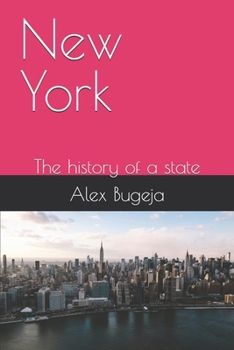New York: The history of a state
To write the history of New York is to write the history of America, but on a stage more concentrated, more vibrant, and often more tumultuous. This sweeping narrative begins long before European contact, exploring the sophisticated Indigenous societies, most notably the Haudenosaunee, who first mastered the region's unique geography. It then chronicles the arrival of the Dutch, not as conquerors but as merchants, whose commercial venture of New Netherland infused the future state with a pragmatic, diverse, and trade-driven character that endures to this day. From these foundational years, the story unfolds through the transition to British rule and the crucible of the American Revolution, where New York's strategic importance made it the primary battleground of the war.
Forged in conflict, the new state quickly asserted its dominance through an audacious feat of engineering: the Erie Canal. This transformative project redefined the economic landscape of the nation, turning New York City into an undisputed commercial and financial powerhouse and giving birth to a string of prosperous cities across its length. The narrative delves into the immense social and economic changes that followed, from the rise of factories and railroads during the Industrial Revolution to the tidal waves of immigration that passed through the iconic gateway of Ellis Island, forever shaping the state's cultural identity. It captures the stark contrasts of the Gilded Age-the unimaginable wealth of robber barons and the squalid misery of tenement life-and examines the corrupt but functional political machine of Tammany Hall that rose to power in its wake.
The epic story continues through the immense contributions and bitter internal conflicts of the Civil War, followed by the rise of the Progressive spirit, where reformers fought for social change in the face of industrial excess, culminating in the tragic Triangle Shirtwaist Factory fire that reshaped labor laws nationwide. Readers will journey through the cultural explosion of the Harlem Renaissance, the glamour of the Roaring Twenties, the shattering hardship of the Great Depression, and the state's critical role as the "Arsenal of Democracy" during World War II. The account vividly details the post-war boom that fueled a massive expansion of the middle class and the creation of modern suburbia, a landscape powerfully and controversially shaped by the master builder Robert Moses.
Bringing the story into the contemporary era, this history examines the fierce struggles for civil rights in the urban North, the near-collapse of New York City during the fiscal crisis of the 1970s, and its stunning rebirth as a global financial capital driven by the roaring return of Wall Street. The narrative captures the raw creative energy that erupted from the city's decay-the birth of punk rock, disco, and hip-hop-before confronting the defining trauma of September 11th and the state's determined and painstaking efforts to rebuild and recover. From the dot-com boom to the 2008 financial crisis, and from the devastation of Hurricane Sandy to the unprecedented challenges of the COVID-19 pandemic, this is the definitive account of how the Empire State has continuously reinvented itself, a story of tragedy and resilience, ambition and conflict, that is central to the American experience itself.
Related Subjects
History




